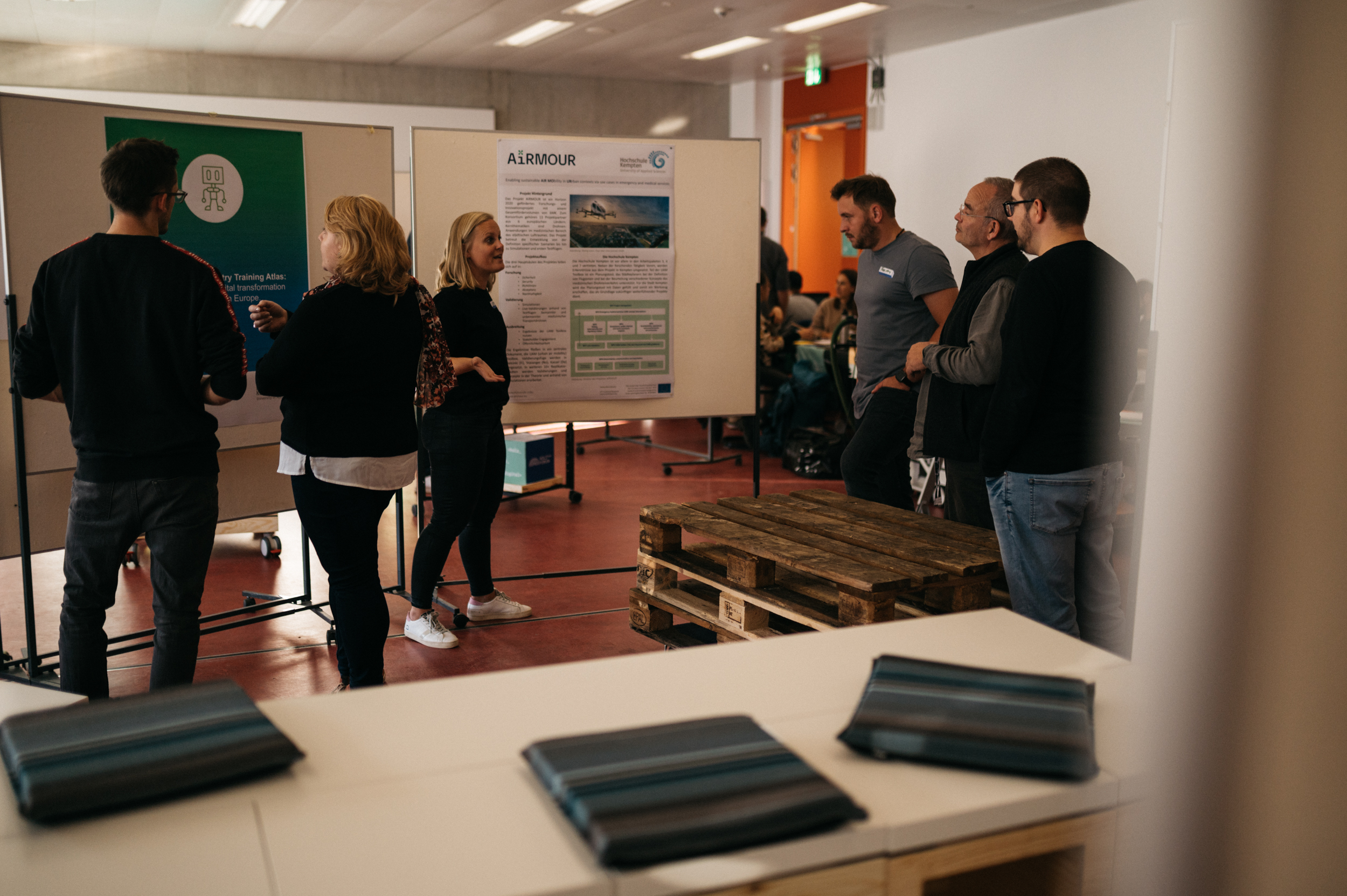The innovation event Inno4wood-Hackathon “Holz macht Digital” organised by Kempten University of Applied Sciences on 15/16 October 2021 gave the DITA project a unique opportunity to present itself during these days and get in direct and personal contact with the target groups to discuss aspects of the project objectives.
Already at the start of the DITA project, one focus was placed on the degree of innovation in the wood sector and was taken up again in this event. The participants came from the forestry, sawmill, carpentry and timber construction sectors, carpenters as well as planners and digital experts and students.
As complex as the topic of digitalisation is in the wood industry, as diverse were the topics that found their place at the hackathon. The “pain points” of this industry were presented, covering all the topics of the Digital Industry Training Atlas. Digital competence holders used the opportunity to ask specific questions and to allocate their expertise.
Different topics or also combinations of topics were taken up, which are part of the categories of the DITA-ATLAS:
- Sensors, actuators, MEMS, NEMS, RF
- Photonics, electronic and optical functional materials
- Robotics and autonomous systems
- IoT (e.g.: connected devices, sensors and actuators networks)
- Artificial intelligence and cognitive systems
- Interaction technologies (e.g.: human machine interaction, motion recognition and language technologies)
- Advanced or high-performance computing
- Data mining, big data, database management
- Simulation and modelling
- Cloud computing
- ICT management, logistics and business systems
- Internet services (e.g. web development, web production, design, networking and e-commerce)
- New media technologies

The following use cases had been worked on:
– A wood cloud that makes it possible to take into account the subsequent use in the event of deconstruction when constructing a building from wood in order to achieve the climate targets. Wood can be reused for new buildings after an assessment.
– How to use possibly existing tools for customer communication guidance.
– Classification of wood through the use of smartphone and image recognition programmes.
– Channelling of removal orders by means of character recognition and standardisation of input masks for different information providers.
– The direct reading of CAD data onto an executing robot
– Equipping houses with sensors in order to increase their lifespan through monitoring.
– How to determine the future value of a forest in relation to an investment
– A work instruction that immediately queries possible quality defects in relation to the construction plan
– The roof damage sensor for rain or other water, which notices damage long before the house owner and thus informs the manufacturer of the roof before the damage becomes expensive
The profit of the DITA Education Atlas were demonstrated to the participants and also the benefits national and European perspectives were addressed. Training providers, companies and students were convinced of the opportunities of a platform.
At the same time, the event concept enabled networking with other European funding projects and could thus open up new perspectives for DITA.
The 55 participants came from different sectors, SMEs, training providers, students and representatives of the European projects.
